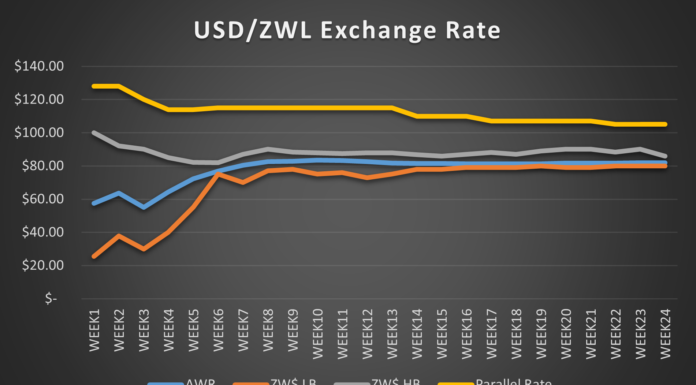Talkmore Gandiwa
Zimbabwe is eyeing Europe and Middle Eastern countries as new markets for its blueberries, following a projected 45% increase in exports for 2024.
The projected 45% increase in exports primarily results from plant maturity and increased yield, rather than new plantings.
In 2023, Zimbabwean farmers cultivated 570 hectares of blueberries, yielding 5 500 tons. The Horticultural Development Council (HDC) plans to ramp up exports to around 8 000 tons this year, buoyed by the anticipated demand from these new markets.
Additionally, Zimbabwe initiated protocols for blueberry exports to new markets in 2024. The HDC remains optimistic about enhanced export figures, driven by both the improved maturity of blueberry plants and the expansion into these promising new markets.
Zimtrade said the country has been expanding its export markets for blueberries, targeting European and Middle Eastern countries.
“Access to these lucrative markets has boosted the competitiveness of Zimbabwean blueberries by increasing their visibility and demand on an international scale,” said Zimtrade.
Furthermore, the company said, while Zimbabwe has access to several markets, expanding into new ones could provide further growth opportunities.
In 2022, the country contributed 10.76% to global blueberry export despite recording a 10% decline in growth.
“Growth is expected to remain subdued for the 2023-2024 season, due to the ongoing varietal replacement that is taking place within the Chilean blueberry industry,” said Zimtrade.
Adding on Zimtrade revealed that growers in Chile have uprooted 1,164 hectares of old varieties with lower productivity and poor postharvest life and have replaced it with 607 hectares of new varieties.
However, in Africa, Morocco and South Africa are the largest African exporters of blueberries but the two countries have been heavily affected resulting in recording a decline in the exports during the year ending December 2022.
At the end of 2022, Morocco faced a severe cold snap that devastated several crops, including blueberries, leading to their scarcity on shelves and driving prices to record highs.
Meanwhile, Zimbabwe, currently the 22nd largest blueberry exporter, is expected to rise in rankings as new production efforts and the maturation of existing orchards take effect.
Despite challenges such as rising production costs and reduced returns per kilogram, Zimbabwe has continued to thrive in export markets. Farmers have reported issues from the 2022 season, notably inconsistent power supply that disrupted irrigation in some orchards.
The El-Nino phenomenon is however expected to negatively affect yield and trade of the superfruit during the 2023-2024 farming season. However, this also presents an opportunity for research into climate-resilient varieties.
“To meet export standards, Zimbabwean growers and exporters are heavily investing in on-farm and near farm cold chain infrastructure to meet food safety standards, meet quality requirements and reduce losses,” said Zimtrade.
This would require strategic planning and undertaking export promotion programmes to position the Zimbabwe-grown fruit on the global market.
“Here, farmers must take optimum advantage of export promotion services offered by Zimtrade, the national trade development and promotion agency, and its local and international partners,” said Zimtrade.
Zimbabwe was the fastest growing blueberry exporter, with the growth being sustained by a combination of factors, including Government support, favourable climate conditions, research and development, and market demand.
Zimbabwe’s blueberry exports grew by 85 percent from US$6,3 million recorded in 2021 to US$11,7 million in 2022, despite the one percent decline in the global trade of the product
Since 2019, Peru has been the leading exporter of fresh cranberries, blueberries, and other Vaccinium fruits, surpassing Chile in export volume. In 2022, Peru accounted for around 30% of global trade, with a record export value of $1.35 billion.
The country saw a 12% increase in production from 2021 to 2022, with major export markets including the United States ($703 million), the Netherlands ($309 million), and China ($138 million).
However, in 2023, Peru experienced a significant drop in blueberry exports, impacting the global market. This decline was largely due to unusually high temperatures during the blueberry flowering period.
Despite being the top blueberry exporter, Peru’s challenges have created an opportunity for Zimbabwe, the country has the chance to position itself as a premium supplier, potentially commanding higher prices and strengthening its foothold in the global market.












